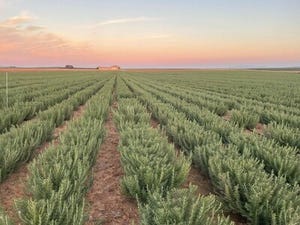Swine Health Quarterly: Leman conference focuses on practical disease research
December 1, 2016

*Dr. Brad Leuwerke is with the Swine Vet Center in St. Peter, Minn.
EACH September, the Allen D. Leman Conference brings together a unique blend of swine producers, veterinarians, researchers and industry experts from around the world.
Many of the sessions revolve around current swine health and production matters. Attendees also get the opportunity to view a wide array of practical field- and laboratory-based disease research data of importance to the continuous improvement of their own herds' health.
A summary of some of these projects is provided here.
PRRS seasonality
Kanankege et al. presented an analysis of porcine reproductive and respiratory syndrome (PRRS) seasonality in midwestern farms.
This study was an analysis of a large data set gathered from the Swine Health Monitoring Project (SHMP). The goal was to define patterns of seasonality of PRRS virus outbreaks among 358 participating sow farms between 2011 and 2015. Those producers provide SHMP with the PRRS status of each of their herds on a weekly basis.
From 2011 to 2013, PRRS outbreaks demonstrated a predictable pattern of seasonality, with outbreaks declining from May to June of each year, followed by a dramatic increase in cases beginning in November.
In the last two years, the seasonality of outbreaks has been less predictable. Although PRRS outbreaks still increased in the fall of each year, more cases occurred during times that historically had been quiet (late spring into summer).
This study shows that in midwestern sow herds, the highest-risk time for new PRRS virus introductions continues to be fall and into winter.
PRRS risk factors
Arruda et al. looked at land coverage and elevation as risk factors for PRRS outbreaks. Using the same SHMP database, this project focused on determining an association between environmental factors — including site elevation, land slope and vegetation — on the rate of PRRS outbreaks.
Information was analyzed from 706 SHMP participant sow herds during 2009-16. Environmental information, including the surrounding land coverage (cultivated, trees or shrubs) and terrain (the altitude and slope of the site compared to the surrounding area), was collected.
An analysis of farm data showed an average outbreak rate of 1.38 per year, with approximately 40% of the participating farms not reporting any PRRS outbreak during this time frame.
Although the elevation of the sow farm site was not a significant contributor to the outbreak rate, it was found that farms physically located in terrains with a slope of greater than 9% were more protected than farms with a terrain slope of less than 1%.
Similarly, farms where shrubs and trees provided cover were more protected and had less frequent PRRS outbreaks compared to farms in locations without these environmental features.
Mycoplasma
Roos et al. discussed the colonization of Mycoplasma hyorhinis and Mycoplasma hyosynoviae prior to weaning.
M. hyorhinis and M. hyosynoviae are thought to be transmitted from sow to offspring during the lactation period. Both organisms play a role in arthritis and lameness observed in growing and finishing pigs.
The goal of this study was to compare the rate of bacterial colonization among sows and piglets during early lactation and prior to weaning to better understand the transmission dynamics of both pathogens.
The farm used for this study had a history of arthritis and lameness in the nursery and finishing pigs. In total, 29 sows and 120 piglets were randomly selected for sampling.
For sows and piglets sampled within the first week post-farrowing, M. hyorhinis was detected in 75% of sows and less than 10% of piglets. At the time of weaning, this changed to 65% for sows and 50% for piglets.
During the first week post-farrowing, 55% of sows and 0% of pigs were positive for M. hyosynoviae based on tonsil swab testing. At weaning, M. hyosynoviae was detected in 50% of sows and 1% of piglets.
The results of this study show that piglets are colonized with both bacterial pathogens prior to weaning. The lower rate of piglets positive for M. hyosynoviae may indicate slower colonization of the young pig and could explain why this pathogen tends to be associated more with finishing arthritis than nursery health challenges.
Seneca Valley virus
Diel et al. presented the dynamics and pathogenesis of Senecavirus A. As Seneca Valley virus (SVV) has been diagnosed across U.S. adult and growing pig populations, a more thorough understanding of virus dynamics after a group of pigs becomes infected is needed.
Further knowledge of virus dynamics following infection will aid in the investigation of how outbreaks happen or how the virus was introduced into a population. This information can also be helpful in virus elimination projects within herds.
In this study, 12 pigs of mid-finishing age that were negative for SVV were split into two groups. One group was infected with SVV, and the second group remained as negative controls. Following the challenge, animals were observed for clinical signs and were sampled at several time points over the course of five weeks.
Clinical signs such as lameness and fever were first observed at four days following the challenge in the experimental group. From days 4 to 14, vesicular lesions were also described for pigs in the infected group. These blisters formed on the snout, coronary band and hoof sole area of affected pigs.
During this study, SVV was detected in both oral and nasal secretions for the first 28 days following infection. The virus was also identified in serum from days 3 to 10 following infection.
Looking at the immune response, infected pigs developed an early and robust antibody response, with antibodies being detectable as early as five days post-infection. Antibodies remained elevated among infected pigs throughout the entire five-week study.
References
Arruda, A., et al. 2016. Investigation of land coverage and elevation as risk factors for PRRS breaks. Allen D. Leman Conference proceedings.
Diel, D., et al. 2016. Infection dynamics and pathogenesis of Senecavirus A swine. Allen D. Leman Conference proceedings.
Kanankege, K., et al. 2016. Space-time analysis of porcine reproductive and respiratory syndrome (PRRS) in midwestern sow farms during 2011-2015. Allen D. Leman Conference proceedings.
Roos, L., et al. 2016. Preliminary results on tonsillar colonization of dams and their offspring by M. hyorhinis and M. hyosynoviae prior to weaning. Allen D. Leman Conference proceedings.
Volume:88 Issue:12
You May Also Like



